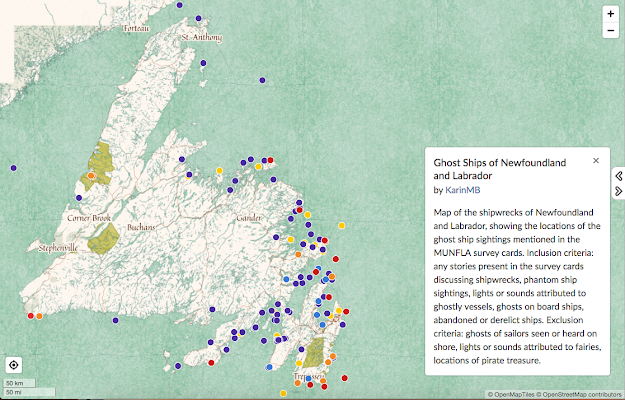____________________________________________________________________________
Edwin Bishop of Heart's Delight-Islington learned how to build wooden boats from watching his father. Boat building skills were passed down through generations, and he has been building wooden boats since he was a teenager. He estimates he has built around 36 boats to date. Last year, he launched what he swore would be his last boat but he is already building another one for his granddaughter. As he says, "Sometimes I think I'm just crazy about boats."
 |
| Boats built by Edwin Bishop. Photo courtesy of Edwin Bishop. |
I think what makes a good boat is the design. The shape of it and the design is what makes a good boat for me, right? I got a phrase that I use from my father that you probably heard before, too, "A beautiful boat is a cranky boat." Now, most people don't to have anything to do with a cranky boat because they figure they're not safe and so on, but for me, and I learned from my father, if you're going to build a boat make sure she can wear a set of sails, and make sure she's a little bit cranky because she'll be better as a sailboat. You know, the curves and the lines...I build all kinds of boats, but a round bottom boat for me is a real boat. The round bottom, a nice sheer curve on top, and when you look at her on the water she's round, and she's curved, and she's pretty.Edwin credits the Wooden Boat Museum of Newfoundland and Labrador for working tirelessly to preserve and pass on boat building knowledge, including his own. He said he has learned a lot from them, and is glad of the work they do bringing education about wooden boats to the younger generation.
He also makes traditional wooden snowshoes, steaming and bending the wood by hand and tying intricate knots. He began learning this skill because he needed to repair the snowshoes he owned. Once he got started, he found it was something he enjoyed. He does say that it is a complicated process, especially tying the knots. He recalls the first pair of snowshoes he made and how he woke up his wife and his visiting sister with his celebratory shouts when he successfully figured out how to tie the knots after working on them until the wee hours of the morning.
 |
| Moose hide snowshoes by Edwin Bishop. Photo courtesy of Edwin Bishop. |
____________________________________________________________________________
Do you live on the Baccalieu Trail and practice a traditional skill or know someone who does? Fill out our survey!











